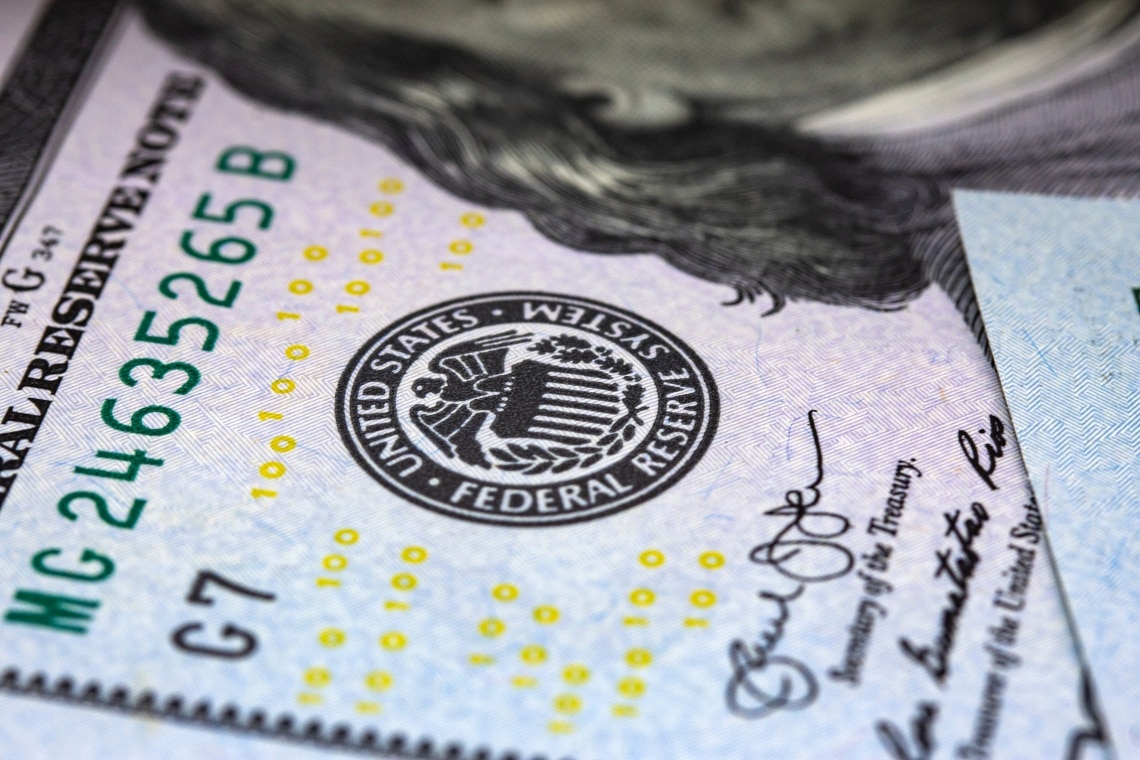In the last ten days of March, the Fed drained capital from the banking system, and this perhaps also hurt the crypto markets.
There is a chart, posted on the St. Louis Fed’s Fred, that shows that from 21 March, the so-called Overnight Reverse Repurchase Agreements (also called Reverse Repo) rose from $2,098 billion to $2,375 billion on 31 March. They later dropped to 2,221 billion, but this is still a high level from the 2,042 touched on 14 March.
However, these are not the all-time highs, because the high was recorded on 30 December 2022, for one day only, when they skyrocketed to $2,553 billion.
But if we take the level of a year ago as a reference, in March 2022 they did not exceed 1,800 billion, except for the last of the month. Still in May the level was below 1,900 billion, although already in June they rose above 2,200 billion.
Comparing the curve in that chart for the last year and a half with that of interest rates, reveals that it was precisely in May 2022 that the latter began to rise, with two sharp spikes, one between May and August, and another between October and November.
It is no coincidence that daily Reverse Repos grew a lot between May and June last year, then touching a first peak above $2,400 billion just in October.
Summary
Fed: What is happening in the traditional and crypto markets?
Reverse Repos allow money market funds to park money at the Federal Reserve, thus earning more interest than they could by depositing money in commercial bank accounts.
It is worth noting that during the night the financial markets are closed, so money tends to sit idle.
In addition, large money market funds are vehicles that tend to invest in low-risk financial products, so they are used to collecting very low percentage returns.
According to some analysts, the heavy use of Reverse Repos is causing real capital flight from bank deposits, which, not surprisingly, fell by nearly $126 million in the weeks following last month’s banking crisis.
For example, the Bank Policy Institute (BPI) a few days ago, in a post on its official blog, pointed out that in the past year commercial bank deposits in the US have plummeted by $500 billion, or a drop of almost 3%.
They then add that although money market mutual funds have always taken money out of bank deposits, that money usually financed economic activities, and much of it ended up going back into the banking system, either directly or indirectly. In contrast, Reverse Repos act as a “black hole” for bank deposits.
In other words, the fact that Reverse Repos increased by more than 300 billion from 14 to 31 March means that such a net amount of money was drained out of the banking system altogether.
The consequences
Furthermore, the fact that these sums are effectively locked when deposited with the Fed, which issues the Reverse Repos, implies that they are no longer in circulation in the financial markets.
Perhaps it is no coincidence that the bulk of the drop in US stock markets in 2022 occurred precisely between April and June, that is, as the Reverse Repos were rising from $1.7 trillion to $2.3 trillion, with the Fed’s interest rates rising from 0.3% to 1.2%.
The US stock markets took another sharp drop between August and October, which was when Reverse Repos rose to $2.4 trillion, and interest rates to 3%.
It is worth noting that rates then continued to rise, to over 4.5% in February, though these Reverse Repos after October did not rise again, except for the single spike on 30 December. Indeed, by November 2022, and then again by February 2023, they had fallen to $2 trillion.
In contrast, the US stock markets, apart from a low peak right at the end of December, in line with those of October and November, have not fallen again.
It would therefore appear that there may be an inverse correlation between the Reverse Repos and the financial markets.
The crypto markets
Bitcoin’s price, excluding the times in 2022 when it collapsed due to internal problems in the crypto market, followed a similar pattern, with a first sharp drop just between May and June, and a second in November.
However, in the second half of March, when the Reverse Repos started to rise again due to the banking crisis, both the US exchanges and the crypto markets were not adversely affected. In fact, they actually recorded positive performance.
The phenomenon therefore seems to have mostly had an impact in 2022, meaning that while over the course of a single year the Fed drained about $800 billion from the currency markets with Reverse Repos, during 2023 it no longer had an impact, as the level of Reverse Repo remained constant overall.
It is worth noting that at the end of January, Reverse Repo had returned to around $2 trillion, while on 9 March it was back above $2.2 trillion.
Bitcoin’s price during that period went from about $24,000 in early February to $19,800 on 10 March. The performance of the US exchanges has been similar.
The current level of Reverse Repos is in line with that of 9 March, despite the spike on 31 March probably due to the end of the quarter, while for example the price of Bitcoin has since risen to $28,000.




